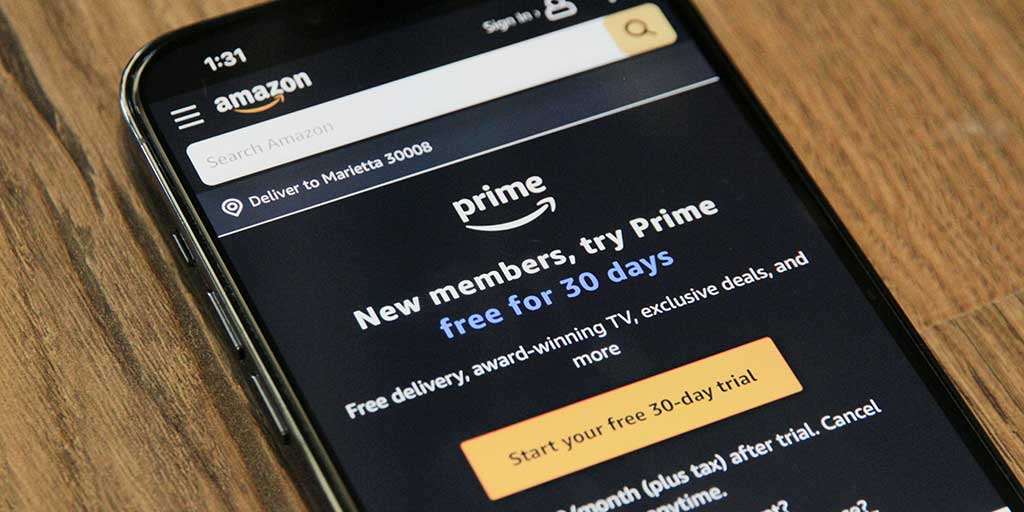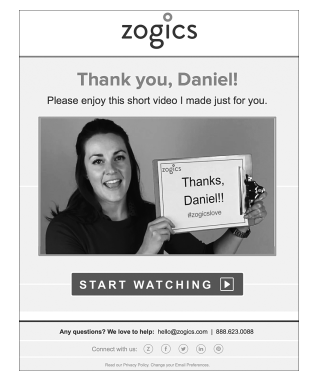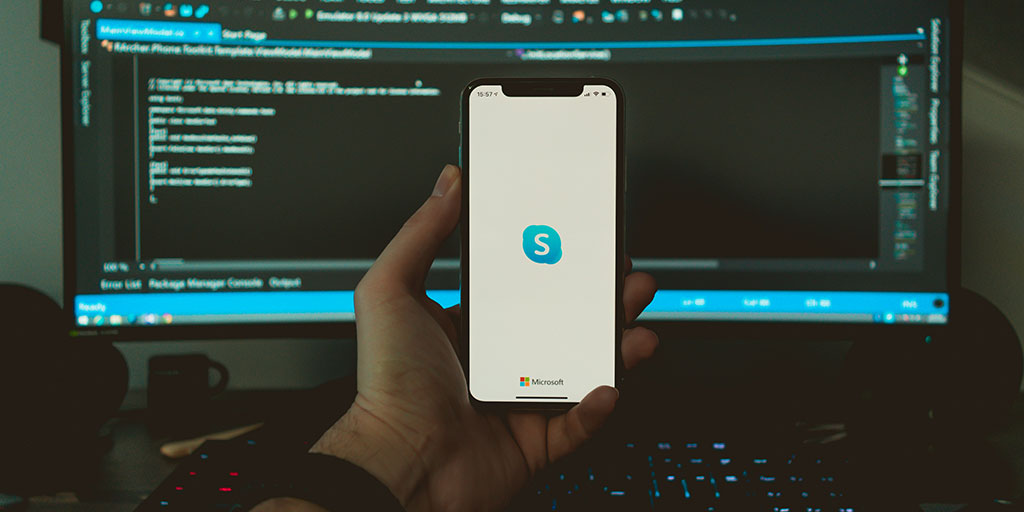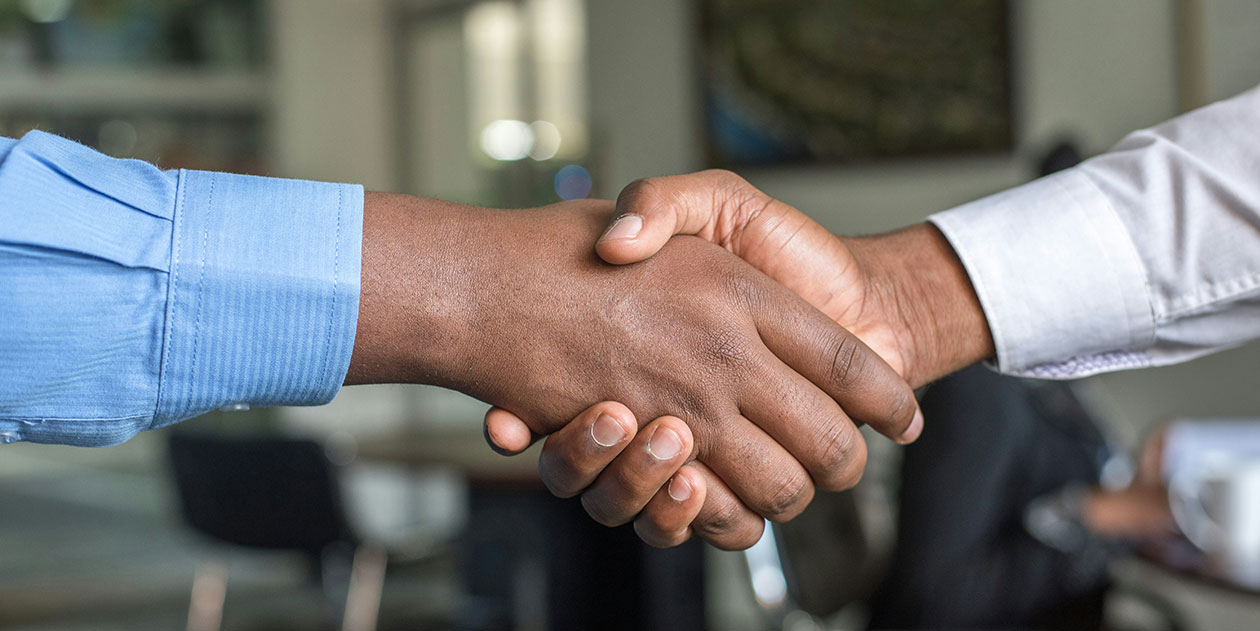Nearly every business spends a huge amount of time, money, and energy trying to land new clients. Customer acquisition is usually the highest single cost centre in a business.
And yet in almost all of these businesses, where so much effort is spent trying to persuade people to become customers, virtually no effort is spent trying to keep the customers once they have them.
The very structure of most businesses is set up to reward the acquisition of new customers. In most businesses, the “stars” are the employees who bring in new clients, not the employees who keep clients happy after the sale.
But customer loyalty is critical to any business’s long-term success
According to the Harvard Business Review, “Depending on which study you believe and what industry you’re in, acquiring a new customer is anywhere from five to 25 times more expensive than retaining an existing one.” Moreover, a mere 5% boost in retention rates can drive profit increases of 25% to 95%.
Retention doesn’t tell the whole story. Loyal customers are also more likely to engage with your brand on social media, recommend your products to friends and family, and purchase new product offerings.
According to Marketing Metrics, when selling to a new prospect there is a 5 to 20 percent chance of making the sale. When selling to an existing customer, that probability skyrockets to 60 to 70 per cent. Because they already trust your business and its products or services. Focusing on existing customers makes it easier to sell and grow the business.
Study after study shows customers across all industries are interested in doing business with the company they already know. If you’re providing a remarkable customer experience, customers will continue doing business with you. And they will bring their friends along as well.
Their recommendations count. According to HubSpot research, 81% of customers trust recommendations from friends and family.
So, if you want to scale your business, maximize revenue, and increase customer loyalty, you need to create and deliver the kind of highly relevant, personalized customer experiences that turn fair-weather shoppers into loyal brand advocates.
Most businesses think they are already doing that. According to research by Bain & Company, when asked, 80% of companies say they deliver “superior” customer service. However, the customers’ perception of the service level was very different. Only 8% of customers felt the companies delivered “superior” customer service.
In this article, we’ll explore effective strategies to help you nurture and sustain customer loyalty, creating a solid foundation for long-term success. Whether you run a small business or a large corporation, this information can be applied to strengthen your customer relationships and boost your bottom line.
Who Are Loyal Customers?
Cultivating loyalty begins with defining your best customers, the people who love what your company offers and are most inclined to engage in a long-term affiliation. You’ll want to keep a clear picture of these customers in mind when you create your loyalty initiatives.
Different businesses conceptualize loyal customers in different ways. In their book Loyalty Management, Prof. Cristina Ziliani and Prof. Marco Ieva conducted a survey to see how businesses define loyalty:
In 2012 we conducted an extensive survey with Italian companies from a range of industries that included retail and manufacturing with the aim of understanding (1) how companies defined a customer as loyal to their brand and (2) what measures of loyalty they employed.
We found that the most common conceptualizations of a loyal customer were:
- one who repeats purchases
- one who chooses our brand most or all the time for need
- one who has an emotional bond with our brand
- one who does not cede to competitors’ promotions and offers
Respondents in retail tended to cite frequency as the proof of loyalty, while manufacturers preferred a share-of-requirement/share-in-handlers perspective. Behaviours, rather than attitudes, tended to be ‘working definitions’ of loyalty for companies. The most-cited metrics were behavioural measures: frequency & spending for retailers, and frequency & share of requirement for manufacturers.
These are not the best way to define loyal customers. If you want to think about true loyalty, you have to go deeper. Because not all kinds of loyalties are the same.
In her book Keep Your Customers, author Ali Cudby divides loyal customers into three kinds – lazy loyals, limited loyals and lucrative loyals.
Lazy loyals are repeat customers who buy from you because you are the convenient option. They don’t really feel any kind of loyalty towards you. If the circumstances change, they’ll leave without a second thought.
Limited loyals are those that have been buying from you for a long time. They are moderately invested in their relationship with you. But they lack engagement and connection. If there’s no switching cost or barrier to exit, they’ll leave.
There’s nothing wrong with these types of customers. But you shouldn’t waste your resources to attract more of them.
What you should focus on are lucrative loyals. They are customers who are super dedicated to you. They buy consistently and they feel a genuine connection with you. They refer prospective customers and talk about you with friends and on social media.
Your focus and energy should be on these customers. You need to tailor your programs, product design, marketing, and other outreach to their wants and needs. When you’re clear about your lucrative loyals’ profile, you can target similar prospective customers for acquisition.
How do you identify these lucrative loyals? Ali Cudby shares:
Start with the low-hanging fruit: repeat buyers. Beginning with customers who’ve purchased more than once is a simple and effective way to narrow your population of potential lucrative loyal customers.
Next, track referrals. Since lucrative loyals feel connected to your company, they’re more likely to refer other people to your business. Find ways to identify referrals whenever possible. This can be easier in some companies than others. Referral codes and other online tools help customers make referrals and help you catalogue them. For companies that don’t use those methods, there are other creative ways to provide incentives to customers to make their referrals known.
Some of my clients send a gift when customers make referrals. This process requires the companies to create a habit of asking new customers if they were referred. When a referral is identified, the company sends a thank-you gift to the customer. Customers who are inclined toward lucrative loyalty quickly catch on to this gifting bonus. Referrals go up and so does the company’s ability to track them.
A third opportunity to identify lucrative loyals is to capture customer interaction. Identify where your lucrative loyals are most inclined to engage. You should also monitor internal customer support channels, such as service calls, emails, and technical support tickets. Even when customers call to complain, they’re engaging with your company. Another way to examine engagement is to track which customers open your emails, click through your emails, or use promotional codes you generate.
Loyalty Programs Are Difficult for Digital Businesses

One of the best ways to increase customer loyalty is to start a loyalty program. We like to be known and acknowledged in our lives. We like special treatment. That’s why so many retailers, credit card companies, airlines run a loyalty program. They use these desires of ours to create brand loyalty.
Loyalty programmes can be incredibly successful. Amazon Prime was launched in 2005. If you are not familiar with it, subscribers pay $139 per year to gain access to free delivery of over 300 million items, streaming of thousands of movies and TV episodes, Alexa voice shopping, free access to 3000 Kindle books and other content. The subscription model incentivizes users to make additional purchases in order to achieve a return on their investment. It has now over 200 million members.
In China, Alibaba runs the ‘88 Membership’ programme. The members get exclusive discounts from many domestic and international brands. They also get access to products that are not open to other customers.
The program also reward customers for their purchasing activity on Alibaba’s platforms, and for their online engagement. This can take the form of writing product reviews, posting images of product pages on social media, or posting or answering questions in community forums.
The fact that engagement is rewarded with points and privileges drive more activity and engagement in a reinforcing cycle that supports repeat visits and purchases on the platforms as well as referrals.
Starbucks run a loyalty programme where customers who enter a Starbucks branch to drink coffee can be rewarded for it. Their loyalty program is regarded by some as the most successful loyalty programme in America
A few years ago, Starbucks then chief financial officer Scott Maw said that ‘over the last couple years, almost all of our same-store sales growth came from those customers that we have digital relationships with and those that are in our Starbucks Rewards program’
If you are a running a retail business, loyalty programmes can be incredibly useful. But if you are a online creator or if you running a something like a SaaS business or agency, these types of loyalty program won’t work for you. You’ll have to follow other strategies.
Let’s take a look at a few of these strategies:
Create a Welcome Program
The moment a new customer decides to do business with your company is an important one. The customers had lots of options. But they chose you. So make your welcome special. Let it be a moment that thoughtfully sets the tone for the relationship you want to build with your customers.
Businesses rarely acknowledge or thank customers for their initial decision to buy from them. If you create an authentic outreach program, it will set you apart from thousands of brands your customers interact with. The customers will remember you. It will be a great start to a relationship that might go on to become a loyal one.
In her book Keep Your Customers, author Ali Cudby shares how you can create a welcome program:
Consider how you can uniquely express the value of being your customer through your welcome. Examples range from personal outreach (e.g., a phone call or hand-written note) to a gift that ties to your company’s values and the work you’re going to do with your customer. It could be food. It could be a book.
The more you can articulate what makes your company special and build it into your welcome, the more it will resonate with the customers most inclined toward loyalty. It may not resonate deeply with everyone, and that’s okay. You’re aiming for the hearts of the loyal few.
A good welcome will feel personal and sincere to the recipient. Note that the operative word is feel. Something that feels personal doesn’t mean a human being at your company must individually welcome every new customer. While that can be right for some companies, it’s not always feasible. Even when it’s feasible, it’s not always the right decision for a company. If your welcome is automated, it needs to feel special to the person who receives it. If you can’t manage the process in-house, there’s a whole industry of companies that personalize gifts and handwrite cards. Offerings range from luxery to budget friendly.
You don’t always need an expensive gift to create a memorable expression. Sometimes a personalized email is enough. Entrepreneur Brittany Hodack, in her book Creating Superfans share such a story.
She placed an order of prescription dog food on the dog food site Chewy. The product page noted that a vet prescription was required to fill the order and should be submitted via email. So she sent an email. According to her:
It was a Saturday, so I figured it would be Monday before I received any kind of human-aided response. Instead, a response came seven minutes later. It said:
Hi there Brittany,
Thanks so much for sending Bear’s prescription directly. I’ve applied it to your order, and everything is set. Once it ships out, you’ll get an email confirmation and a tracking number. If you need anything at all, give us a bark. We’re here 24/7 to lend a helping paw.
Chow-Chow for now,
KELLY
That email elevates what could have been an ordinary, forgettable interaction into a memorable one.
Would an automated email that said, “Hello, an Rx was received and will be applied to your order” have made the same impact? Of course not. Yet far too many businesses settle for okay. They’ve become fine with mundane.
Writing good emails doesn’t take anything from your budget. So instead of using an automated email, write a personable email. These can make customers feel appreciated.
Chew’s welcome programme didn’t stop at a personalized email. About a week after Hadock placed that first order, she got a handwritten “Welcome!” postcard in the mail addressed to her dog Bear.
A few days later, she received a call from an employee who was getting in touch just to ask if the dog food had helped Bear recover from his issues. The employee then suggested a few non-prescription foods she could try from now on.
Joey Colman in his book Never Lose a Customer Again, shares another similar example from Zogics. Zogics sells cleaning supplies. When customers buy a product, at the end of the day, they receive an email.
The most interesting aspect of this message is the thumbnail screenshot of the Zogics employee holding a clipboard that says “Thank you, Daniel!” The fact that the thumbnail for this video includes an image proving the personalization of the message results in a very high click-through rate for email recipients watching the video. Prior to sending the email showing the personalized thumbnail image, approximately 20 percent of new customers opened the confirmation email.

Now more than 60 percent of new customers open the email—a 3X improvement in open rates. The number of customers who watched the video in the original formatting was 4.5 percent. Since adding the personalized thumbnail, that watch rate shot up to 20.7 percent—a 5X improvement! To have a video watch rate of 20.7 percent this early in the customer relationship is unheard of in any industry, let alone first-time e-commerce purchasers where click-through rates (let alone watch rates) range between 1.33 and 5.13 percent depending on the product being purchased.
When the new customer elects to play the video, a browser window launches and takes them to a personalized YouTube video. The video starts playing as follows:
Hi Daniel! Laura from Zogics here . . .
I just wanted to take a minute to thank you for your order and let you know we’re here to help with anything that you may need.
We love to see our products in action so please feel free to upload a photo or video to social media using the hashtag #zogicslove.
Thanks again for your wipe and dispenser order. We hope to hear from you soon!
These videos don’t have high production value. It takes Zogics employees less than a minute to create them. But it sets them apart from other brands and helps customers remember the brand.
Use Personalization to Make Customers Feel Appreciated

Companies use personalization in many different ways to make customers feel appreciated. For example, many companies send birthday wishes to their customers. They thank customers on the anniversary of their account.
But doing what others are doing won’t make you stand out. So use the data you keep on your customers. What data do you have that can help you stand apart?
Digital marketing strategies Zontee Hou in her book Data-Driven Personalization shares some ideas:
Perhaps you’re a cosmetics company or clothing brand and, based on order history, you can determine the colour palette that resonates most with your customers to create a personal inspiration board in their account or even a custom phone background to send to them. Perhaps you’re a car company and you can send road trip playlists based on your customers’ self-identified use cases (family trip versus business trip) that you send out just in time for summer trips.
If you don’t have that kind of data, start collecting them. When your customers sign up, they will happily volunteer a lot personal data. Collect them in a CRM tool. Also, start analysing their interaction your business & product.
Recognize Customers Action
When customers start showing signs of loyalty, recognise their actions. It will make them feel appreciated and deepen their loyalty. Ali Cudby in her book Keep Your Customers shares some examples:
For example, suppose a customer makes a second purchase within three months. You know that customers who buy twice within a quarter are more likely to become long-term users of your product or service. You send a thank you card with a personalized note to the customer. Or suppose a customer writes a positive review of your company online. You see the review and write an appreciative response that the customer will be likely to see.
Or suppose a customer made a referral to you. It’s no small thing. They trust you enough to give you a new customer without expecting anything in return. Show him your generosity with a small gift.
We often focus too much on complaints and negative reviews. We know we have worked hard, we deserve the positive review. We take them as given. But if you manage to show customers you are grateful for their positive review, they’ll remember you. They’re also more likely to spread positive word-of mouth about you.
We shared Brittany Hodack’ story about Chewy in the first point. She posted about her positive experience on Instagram and tagged the company. Here’s what happened next:
A few weeks later, a box arrived that I wasn’t expecting. Inside was an assortment of toys and treats with a note from a Chewy employee named Allison, saying how much she’d enjoyed watching a video I’d posted online of my pups pawing at a Chewy box. I tagged Chewy in the cute video, but I never expected them to connect the dots from a social post back to my customer account in their CRM—and I certainly didn’t expect them to send a box with goodies and a personalized note to Bear and his brother, Bandit.
She was so impressed by the company, she now talks about them all the time. She even wrote about the company in her popular book.
Communicate to Customers That Their Opinion Matter

Make your customers know that you value their wishes and opinions. This is quite easy if you sell software. You can start a beta tester community. Give them early access to new programs and use their feedback to improve the product.
If people talk about your product and company on social media, engage with them. These will help you create stronger relationships. If you involve your customers in the future direction of your company, they’ll feel attached to you. They’ll be more willing to talk about you to friends and family.
Zontee Hou, in her book Data-Driven Personalization, shares a story about Starbucks using their customers’ feedback:
In 2008, international coffee chain Starbucks launched a platform called “My Starbucks Idea” that generated over 150,000 ideas from customers on how the company could improve its products and services, with hundreds of ideas implemented in the 10 years that the program was available. Not only did the brand allow other users to search the ideas and add their votes to their favourites, but they also used the platform to share updates on the progress of the ideas that it introduced. Ideas including free Wi-Fi, cake pops, and even flavours like hazelnut macchiato came from this program.
Another small thing you can do is ask them how the’d prefer to communicate with you. Many companies only engage via email or ticketing systems. Ask your customers what channel they’d prefer to communicate with you. This will show you value their preference above yours and build customer loyalty.
Randomly Celebrate Customers
I have shared many examples of sending customers gifts on special occasions. I am mentioning it once again and sharing few more stories because they can be an incredible tool in building loyalties.
Pet food retailer Chewy, for example, send out more than 1,000 hand-painted portraits of pets each week. They use pet photos that are on customers’ Chewy accounts or they collected via customer service interactions.
When customers receive the surprise painting, they almost always share it with friends and on social media. These generate exposure for the brand and loyalty from the customers.
Brittany Hodack shares her story:
A couple of years after my first purchase, another surprise arrived from Chewy: hand-painted canvas portraits of Bandit and Bear. I was so excited that I immediately hung them on the wall—and, of course, shared them on social media. Nearly every time someone comes to my house for the first time, they look at the portraits (which now hang in our entryway) and say something like, “Oh, wow. Did you get pictures painted of your dogs?” Each time I get to say, “No, Chewy sent those to us!” and tell the story all over again.
This simple gift shows customers that they aren’t a nameless, faceless entity to Chewy. The company thinks of them as a valued individual. They value their business.
Not every gift has to be expensive. Ali Cudby shares an example where one of her clients used a personal phone call from the CEO to the company’s most loyal customers to celebrate the anniversary of their first purchase.
This won’t work for everyone. But if you are creative, you can think of non-expensive gifts that your customers will love. You need something that will show customers you have given some thought and effort into it. Not a mass-produced, expensive thing.
Brittany Haddock shares the story of her friend. He got multiple six-figure referrals from a customer to whom he’d sent a $12 pack of tennis balls from Amazon for his daughter, along with a note wishing her good luck in a tournament that weekend.
She shared another story about a mortgage loan officer that used to gift his clients a desk organizer with his company’s logo as a closing gift. After her suggestion, he started gifting a custom photo puzzle that has a photo of the home they’ve just closed on. Each cost him only about $20.
Nearly every client he’s gifted the puzzle to has been delighted. Many even share photos of the completed puzzles on social media and tagged his business. No one who got the desk organizer ever posted about it on social media.
Try to Make as Many Customer Experience as Possible Positive

When customers contact you with questions or a problem they are facing, there are three possible outcomes. At the end of the exchange, they’ll feel better, worse, or the same as they did before.
Your target is the first. If people leave most interactions with you feeling better than they did before, you will naturally build a reputation as someone people want to do business with.
People will come back to you in the future. They’ll also recommend you to their friend.
You might be thinking it’s not possible to turn every interaction into a positive experience. That’s true. But you don’t have to try that. Here’s what Brittany Hodack says in Creating Superfans:
Can you turn every interaction into a net positive? No. You will inevitably nd yourself in situations where you must deliver bad news. But, by focusing on creating a net neutral outcome for your customer instead of a net negative one, you can improve the situation for everyone. Think of possible solutions before you deliver bad news. Be prepared to share your thoughtful plans B, C, and D, then showcase your active listening skills to turn an otherwise negative situation around. Work hard to leave a path of net positive experiences in your wake, and people will notice.
Sometimes businesses do extraordinary things to turn a customer interaction into a positive experience. You’ve probably heard the story of 7-year-old Luka Apps. He was so upset when he lost his lego character Jay ZX on a shopping trip that he wrote LEGO an email asking if they could send him a replacement.
Here’s what he wrote:
Hello,
My name is Luka Apps and I am seven years old.
With all my money I got for Christmas I bought the Ninjago kit of the Ultrasonic Raider. The number is 9449. It is really good.
My Daddy just took me to Sainsbury’s and told me to leave the people at home but I took them and I lost Jay ZX at the shop as it fell out of my coat.
I am really upset I have lost him. Daddy said to send you an email to see if you will send me another one.
I promise I won’t take him to the shop again if you can.
~Luka
A short time later, Luka received a reply from a LEGO customer service representative.
Luka,
I told Sensei Wu that losing your Jay mini figure was purely an accident and that you would never ever let it happen ever again.
He told me to tell you, ‘Luka, your father seems like a very wise man. You must always protect your Ninjago mini figures like the dragons protect the Weapons of Spinjitzu!’
Sensei Wu also told me it was okay if I sent you a new Jay and told me it would be okay if I included something extra for you because anyone that saves their Christmas money to buy the Ultrasonic Raider must be a really big Ninjago fan.
So, I hope you enjoy your Jay mini figure with all his weapons. You will actually have the only Jay mini figure that combines 3 different Jays into one! I am also going to send you a bad guy for him to fight!
Just remember, what Sensei Wu said: keep your mini figures protected like the Weapons of Spinjitzu! And of course, always listen to your Dad.
You will see an envelope from LEGO within the next two weeks with your new minifigures. Please take good care of them, Luka. Remember that you promised to always leave them at home.
As the reply became viral on social, LEGO received a tremendous amount of positive publicity and lots of goodwill. Luka and his family are unlikely to ever forget this experience.
But Treat Your Special Customers Differently
All your customers are important. They are paying you with cold hard cash. You are obliged to make all of them happy. But that doesn’t mean you should treat all your customers the same way.
There are customers, if you give them special perks, you can turn them into lucrative loyal. As customers deepen their relationship with you, segment them. Give them elevated status and access to perks normal customers don’t get.
Ali Cudby, in her book Keep Your Customers, shares some ideas:
- To make sure your best customers save time, give them preferential access to your team with direct access to dedicated support and additional avenues for upgraded customer service.
- Offer your high-value segments ways to sign up early for your events, conferences, and other limited-access perks. Then give them VIP access and experiences
- Ensure that high customer lifetime value segments get personal outreach. Use automated engagement for segments with lower customer lifetime value for your company.
I hope you have found my guide on loyalty building helpful. If you have any questions, feel free to contact me.


